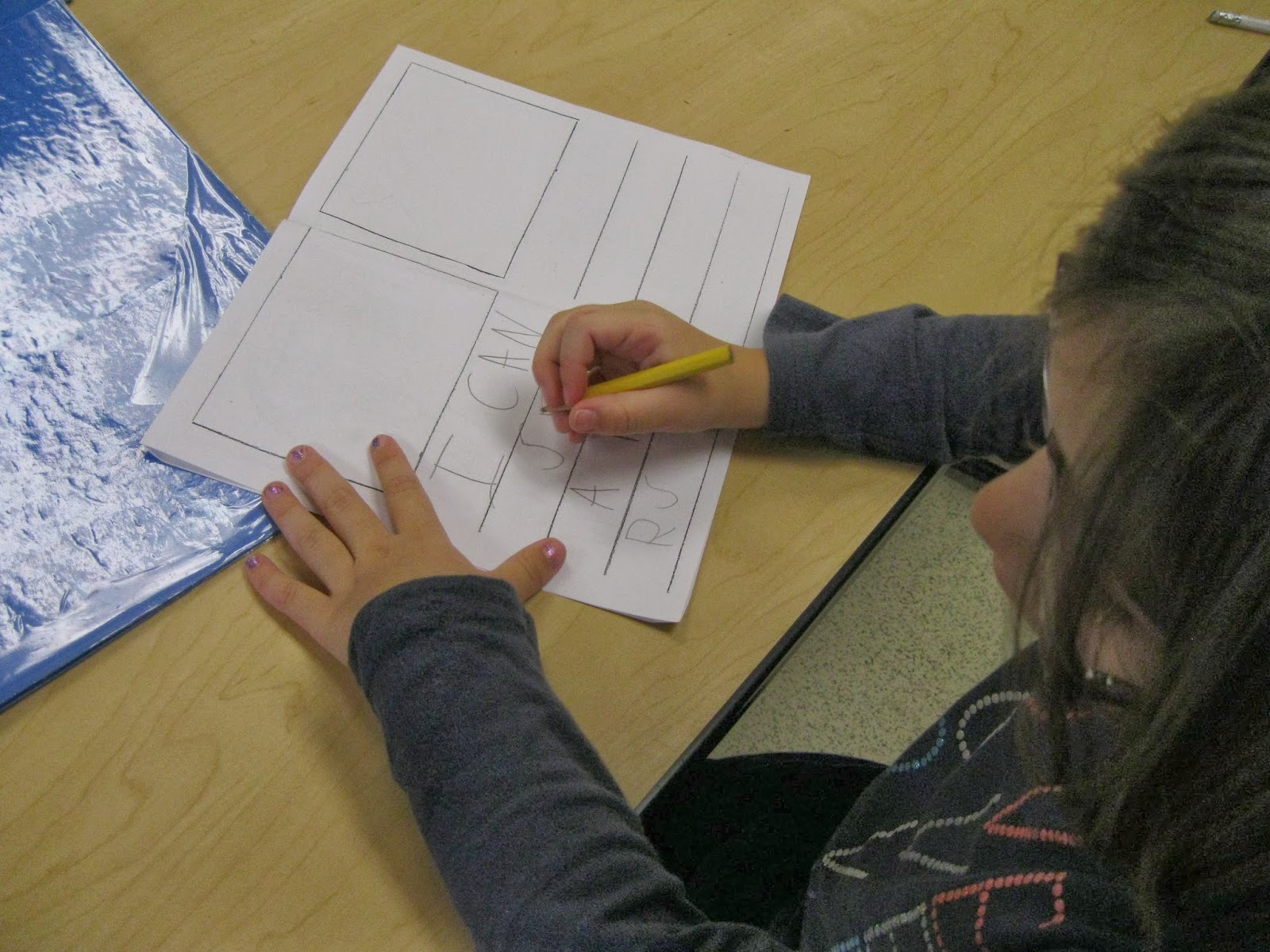- worked on choosing books independently while Mrs. Caron read with students.
- reviewed that readers look at and point under each word for every word they say.
- learned that sometimes when we sound out a word, it might not sound like a real word. When that happens, we need to use our other reading strategies to help us figure out the word.
- learned that often the last page in a book does not follow the pattern that the rest of the pages follow. Readers recognize this and use everything they know about the story to help them read the last page.
- read with our first grade reading buddies!
- learned that just like the books we are reading follow a pattern, we can write pattern books, too. Many of the words we can use in a pattern are on our word wall, making them easy for us to write.
- learned that the pages in a pattern book are all about the same topic.
- wrote a class pattern book about what we do in kindergarten.
- learned that writers write one word for every word they say when they think of a sentence. Words need to be separated by spaces.
- learned that just like the authors of the books we read, we can change the pattern on the last page of our books.
- learned more about leveling a pan balance. We put an object of one side of the balance, and then put a clump of clay on the other side. Through experimentation, we learned that we can add to or take away from the clay to make the scale balanced.
- played an addition game with cubes to help us add up to a sum of ten.
- created a class bar graph about our favorite classroom activities. We then analyzed and discussed the data.
- learned about, and practiced, counting by tens.
Since we only have two days of school this coming week, I will not be updating the blog until the weekend after we get back from break. I hope you all have a wonderful Thanksgiving!
Katie





































